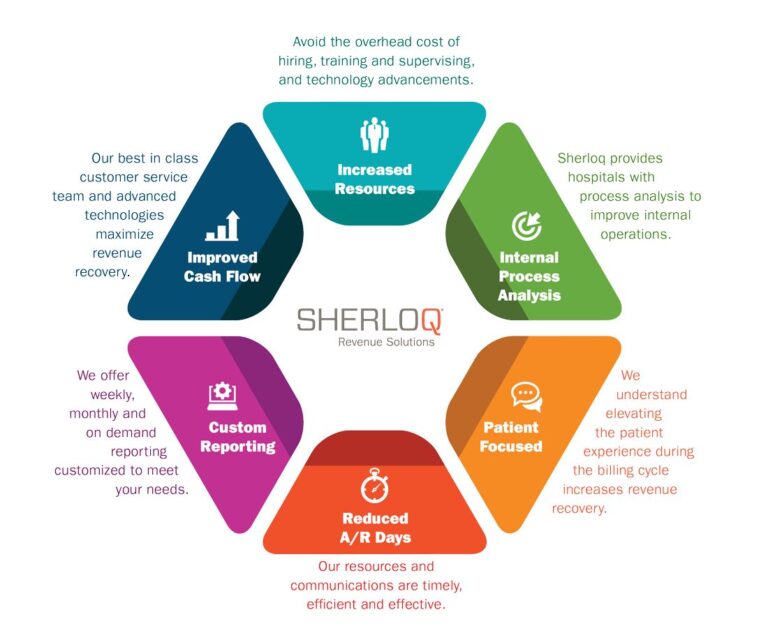
Introduction: The Silent Drain
We see hospitals as pillars of our communities, centers of life-saving care and innovation. Yet behind the scenes, these vital institutions face a massive and often invisible financial challenge. It’s a silent drain caused by a constant stream of unpaid claims and insurance denials, a problem that costs hospitals across the nation billions of dollars every single year.
This financial strain is often measured in “AR days,” which is simply the average number of days it takes for a hospital to get paid after providing a service. When AR days are high, it means a hospital’s cash flow is constricted, forcing them to wait longer for money they are rightfully owed. This puts a major strain on their ability to operate, invest in new technology, and continue providing top-tier care.
But what if the solution wasn’t just about chasing old bills, but about fixing the system itself? The most impactful discoveries in hospital revenue recovery reveal that the biggest wins come from uncovering surprising, deep-seated issues that go far beyond a single rejected claim. This article unpacks the most impactful of those discoveries and shows how addressing them can transform a hospital’s financial health.
1. It’s Not One Problem; It’s a Thousand Tiny Tripwires
One of the most surprising aspects of claim denials is that it’s rarely one big, obvious mistake. Instead, it’s a daunting landscape of a thousand potential errors, a maze of technical tripwires where a single misstep can derail a major payment. A denial can occur at two distinct stages: first, in getting permission, and second, in getting that permission recognized and processed correctly.
Here are just a few of the varied reasons a claim might be denied:
- Payer Authorization & Adjudication Issues: This is a two-step failure point. An insurer might first claim a service wasn’t pre-approved (authorization). Even if it was, they might later reject the claim due to processing errors on their end (adjudication).
- Complex Coding Errors: Using the wrong CPT, HCPCS, or diagnosis codes is a major issue. As one expert put it, “It’s like mislabeling a crucial package in a complex shipping system. It just won’t get where it needs to go.”
- Simple Registration Mistakes: An incorrect patient address, a typo in a policy number, or mixing up primary and secondary insurance plans can stop a claim in its tracks.
- Medical Necessity Denials: The insurer argues that a procedure or service wasn’t medically required for the patient’s condition.
- Timely Filing Issues: The claim was submitted after the payer’s strict deadline, which can often be surprisingly short.
This level of complexity demonstrates that relying on over-burdened, generalist teams is a direct path to revenue leakage, making specialized intervention a matter of financial necessity.
2. The Most Powerful Strategy is Proactive, Not Reactive
The most effective approach to denial management operates on two crucial fronts. The first is reactive: diligently following up on existing unpaid claims and managing appeals. This requires highly specialized professionals—like AAHAM and ICD-10 certified experts with deep payer relationships—to chase down money that’s already at risk. While essential, this is like being on a hamster wheel, perpetually fixing the same problems after they occur.
The true game-changer is the proactive approach, which is the only way to get off the wheel. This is the strategy of preventing future denials through robust root cause analysis. Instead of just fixing a rejected claim, specialists ask why it was denied in the first place, looking for systemic patterns that cause recurring issues. Common root causes frequently uncovered include:
- No authorization was obtained for a service that required it.
- The service code that was pre-authorized didn’t match what was ultimately billed.
- Insurance requirements changed for a patient’s recurring services, and the hospital’s billing department wasn’t aware of the update.
This strategy isn’t just about “patching up the leak.” It’s about figuring out “what caused the pipe to burst in the first place” and helping the hospital install a better one by implementing concrete process improvements, such as routinely checking payer websites for updates or conducting “claim sweeps” to correct widespread errors. This fundamentally changes the hospital’s financial trajectory.
3. Sometimes, the Problem Isn’t an Unpaid Bill—It’s an Unposted Check
This proactive strategy is not theoretical; a real-world case study of a large New York healthcare system shows precisely what this kind of deep-dive analysis can uncover. The system was struggling with a huge backlog of unpaid accounts and unresponsive insurers. The investigation revealed a shocking truth: in many cases, the money wasn’t missing—it was already in the hospital’s possession, made invisible by internal system errors.
The trending analysis uncovered several surprising, systemic issues costing the hospital millions:
- “Phantom” Denials: Specific insurance carriers were frequently denying claims for “no authorization” even when a valid authorization was clearly on file.
- Unposted Voucher Issues: The analysis revealed that the hospital had actually received payments from insurers, but these funds were never correctly recorded or applied to the patient’s account. The bills appeared unpaid, but the check was already in the building.
- Contractual Underpayments: In many cases, insurers simply weren’t paying the full, contractually-agreed-upon amount for services, shorting the hospital on payments they were legally owed.
- Pervasive Front-End Errors: The analysis identified recurring incorrect plan registrations—a problem starting the moment a patient checked in that led to a cascade of downstream denials.
This final point powerfully connects back to the “tiny tripwires” from the start; a simple registration mistake, repeated hundreds of times, becomes a multi-million-dollar structural problem that a hospital might never discover on its own.
4. Fixing the Drips Can Unleash a Multi-Million Dollar Flood of Revenue
Addressing these seemingly small, systemic issues can have a staggering financial impact. For the New York healthcare system, the results of this comprehensive approach were immediate and impressive. They dramatically decreased their AR days—getting paid much faster—and achieved “historically high cash collection months.”
The system’s Director of Credit and Collections offered a powerful endorsement of the results:
We are very pleased with Sherlock’s service, professionalism, and financial results, and are pleased to recommend their services.
The potential revenue is not trivial. An analysis for Tallahassee Memorial Hospital provided another stunning example. Based on their data, placing nearly $2 million in claims that were 45 days old with a specialized team—and achieving an estimated recovery rate of 53%—could translate into an estimated annual net revenue of over $11.6 million for that single hospital. This isn’t about recovering minor amounts; it’s about fundamentally transforming a hospital’s financial stability.
Conclusion: Find Your Own Hidden Drains
Effective denial management is far more than just recovering lost money. It’s about improving a hospital’s financial resilience and operational efficiency by systematically identifying and addressing the root causes of revenue loss. It shifts a hospital from being constantly reactive—putting out fires—to being proactive and strategic about its financial health.
This raises a final, thought-provoking question. If proactive root cause analysis can unlock millions in revenue for hospitals by fixing seemingly small inefficiencies, what analogous ‘denials’ or overlooked drains might exist in your own industry, business, or professional life, just waiting to be identified and resolved?




